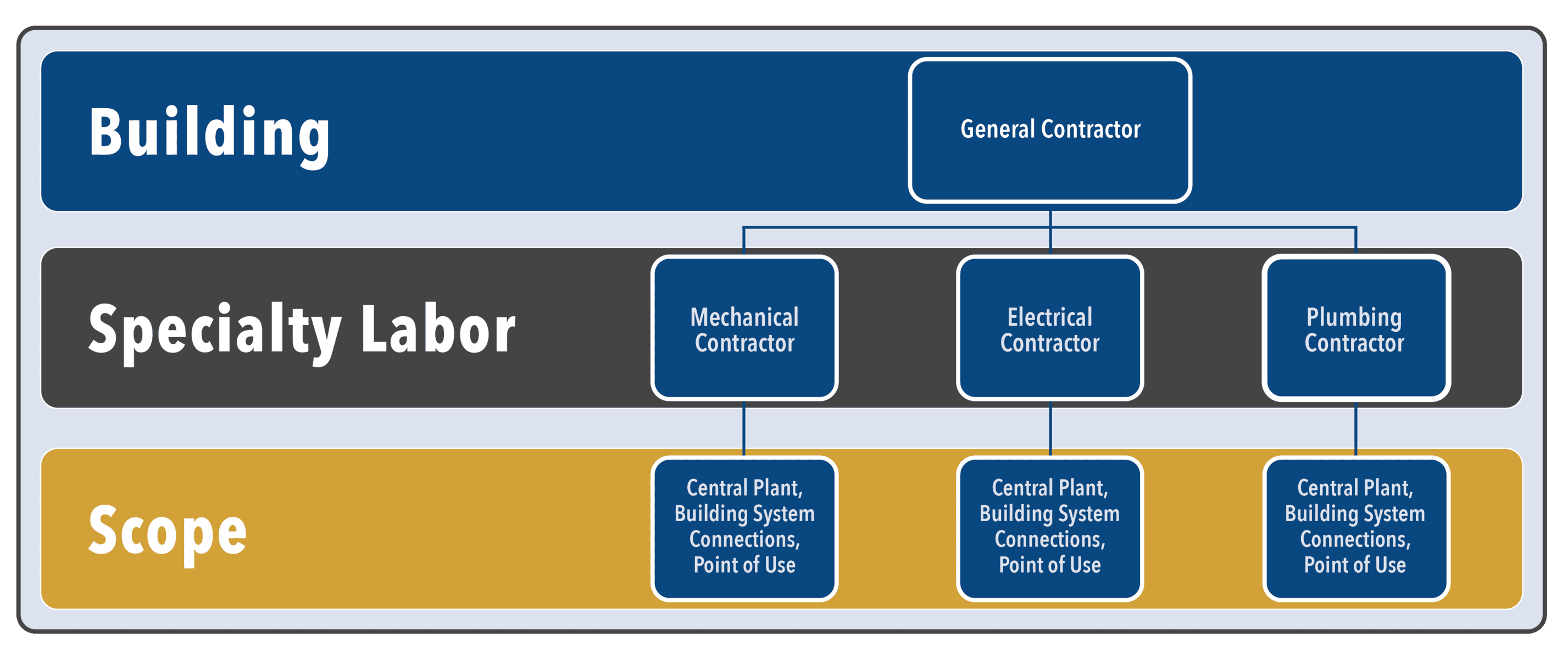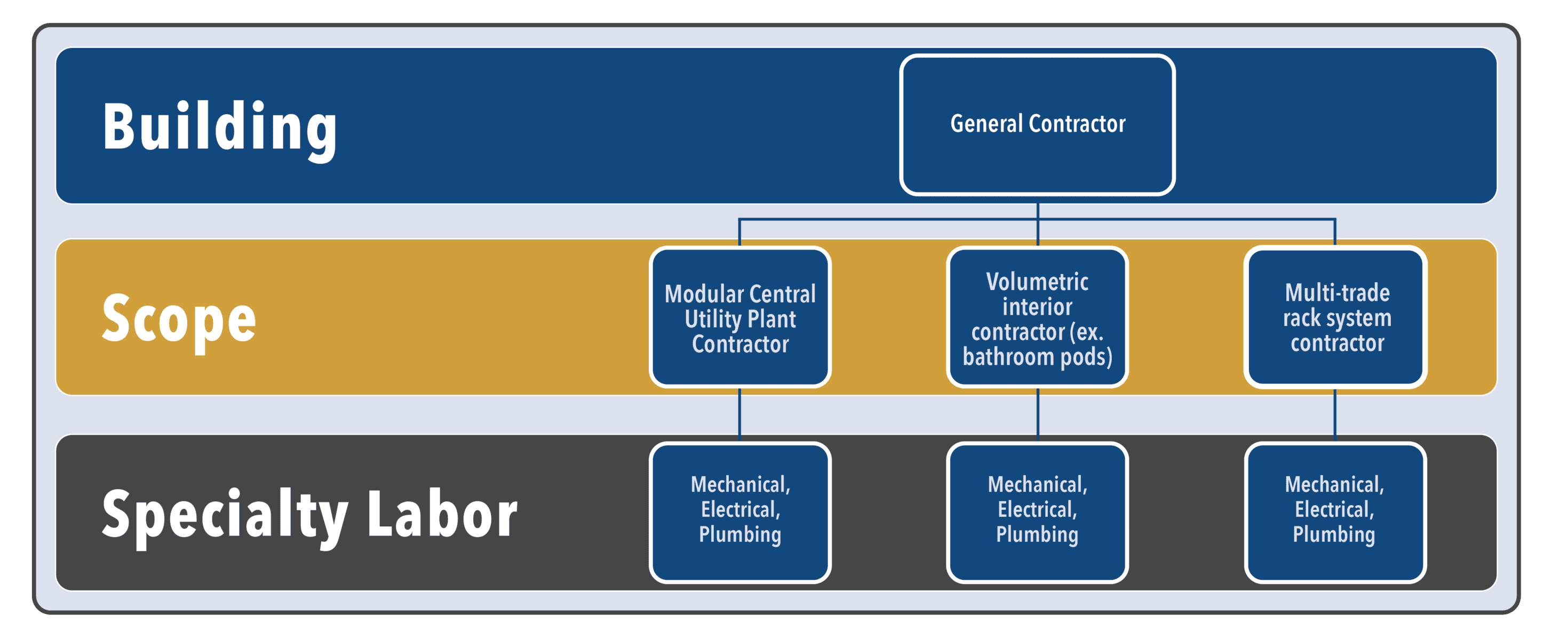Traditional construction is built on the foundational principle that a general contractor is hired to deliver a building. That building includes structural, mechanical, electrical, plumbing, etc. systems – so the general contractor hires firms specializing in those various trades to execute the respective work throughout the building. There are obviously exceptions, but generally this model is a good representation of how almost all projects are organized.
The traditional model has made intuitive sense for traditional construction. Each project is a one off, and the general contractor hires and coordinates specialty trade contractors to build their respective portions of the various sections of the building.
Traditional Model:
However, the construction industry faces many headwinds: schedule pressures, labor availability, site safety, and virtualization – to name a few. Applying a modular prefabricated approach can enable project teams to meet these evolving job site constraints and more aggressive financial goals; yet – many projects only scratch the surface in their optimization of prefabrication and modular construction strategies. One potential cause: the traditional model is not aligned to maximize the impact of prefabrication and modularization.
In the traditional model, the incentive structure only pushes prefabrication of work within specific individual specialty trades – not prefabrication of full building components that encompass multiple specialty trades and disciplines. For example, a mechanical contractor may prefabricate a chiller skid, but it won’t integrate electrical, controls, etc.; this work still needs to get done in the field… ultimately leading to projects which leave a lot of value on the table, with limited reduction in coordination efforts.
Conversely, the spirit of modular construction is to think about a building as a composite set of sub-systems, constructed elsewhere and then assembled in the field – just like subcomponents to a final product in a modern factory. The scope of the individual sub-systems is determined by a holistic analysis of cost, schedule and risk management (e.g., “what makes the most sense?”) – in order to group them in the most efficient and effective way possible.
What if we looked at project development and contractual arrangements in this way?
Modular Model:
In the modular model, “Scope” and “Specialty Labor” are flipped: the project team engages with sub-contractors who specialize in specific types of modular/prefabricated construction. These new scope groupings could include the central utility plant, specialized interiors (such as bathroom pods), or the prefabrication of multi-trade (ex: mechanical/electrical) utility racks. The contractors building the subcomponent systems are horizontally integrated to perform all the specialty labor required for the specific building section. Aligning a project in this way enables project teams to rise above the traditional framework and truly optimize the prefabrication and modularization of complete building subcomponents.
The future of construction is not one-off buildings with unique field-built sub systems; it is a future of unique buildings made whole by combining a unique set of prefabricated subcomponents. These subcomponents are designed by subject-matter experts and built off-site for final assembly in the field. In order to align the incentives of project teams accordingly, we shouldn’t hire subcontractors to perform a single trade throughout the whole building. Instead, we should hire subcontractors who specialize in subcomponent systems and fully execute all trades within their scope of work. Aligning contracts in this way will enable us to meet the challenges of construction today, by maximizing the positive impacts of prefabrication and modularization.



